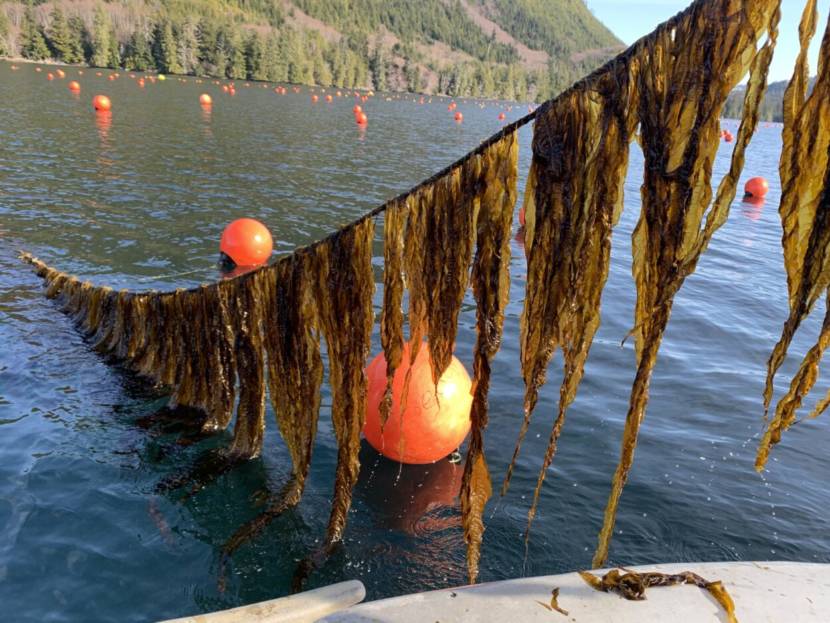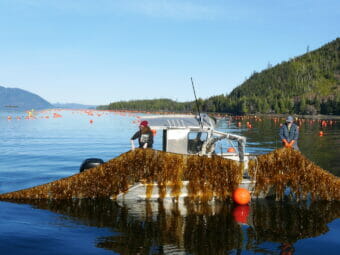
Earlier this month, the National Oceanic and Atmospheric Administration released its first-ever strategic science plan for mariculture in Alaska.
NOAA’s Aquaculture Strategic Science Plan covers five years’ worth of goals and priorities for Alaska kelp and oyster farms — and other niche forms of mariculture, like the cultivation of sea cucumbers and abalone. It identifies areas where it expects the industry to grow and where the agency needs to expand its own research. It also identifies partnership opportunities with other organizations.
Jordan Hollarsmith is the mariculture and macroalgae lead research biologist for the Alaska Fisheries Science Center. She helped author the report. She says it’s kind of like a research blueprint for the road ahead.
“This document was sort of our guiding document of: how do we see NOAA’s role in mariculture research in Alaska?” said Hollarsmith.
That could be a major question for the state in the years to come. Gov. Mike Dunleavy has said he wants to make Alaska “the mariculture capital of the world,” and he put together a mariculture task force to develop a five-year plan detailing how to turn Alaska aquaculture into a $100 million industry. That report was published in May of last year.
According to NOAA, there are 82 kelp farms operating in Alaska, and 24 more have permits pending approval. Most are in Southeast Alaska and in the waters off Kodiak Island. Those farms are valued at $1.5 million.
Other areas of the country — like parts of coastal New England — have also experienced a mariculture boom. But there isn’t a lot of research on kelp farming that’s specific to Alaska.
Hollarsmith says one area that NOAA is interested in as the industry continues to grow is how kelp farms might affect fish habitat.
“We really want to know how do those species respond to these farms? Some may be helped by the presence of the farms, it might create habitat, it might create food sources, some might be deterred by the presence of these farms,” said Hollarsmith.
Similarly, as mariculture expands in Alaska — and ocean conditions change — Hollarsmith said future NOAA research could help create a kind of bumper crop for coastal communities.
“We can pick where we’re growing, where we’re setting these farms and target areas where they may have more stable conditions, and what species are farmed,” she said.
Hollarsmith says there’s a lot to learn. But the fact that NOAA is asking those questions indicates an enthusiasm for mariculture — and exciting future for the industry in Alaska.


